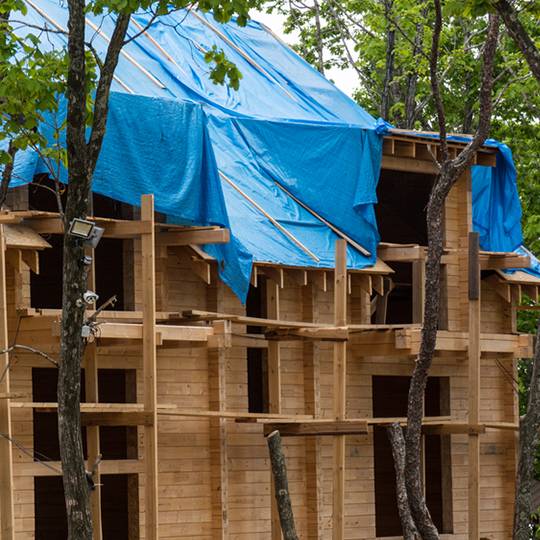Tree Preservation During Construction
Posted
August 11, 2016

Do you plan to build or remodel a home? Does your township or city intend to widen or replace the streets, curbs, sidewalks, and buried utilities in your area? Before breaking ground, consider the effects it will have on surrounding trees and plants. Why worry about tree preservation?
Mature trees and other greenery contribute to property values in many ways. They enhance natural beauty, cut down on noise, reduce energy costs, filter unsightly views, and attract songbirds and other wildlife.
Unfortunately, we’ve heard of too many mishaps in which plants meant to be part of a home’s permanent landscape get injured or killed during remodeling.
Luckily, landowners can preserve valuable trees during construction by following a few simple steps.
Also, before we dive in, keep in mind that although this post focuses on trees, you could apply these tips to protect shrubs, too.
Tree Preservation Starts With Careful Design
The best time to protect trees on your property is during the planning stage of the project. Does the site of your new garage need to be on top of that oak tree’s root structure? And even if the expanded driveway doesn’t touch the maple itself, will the pavement poison or suffocate the roots? Consider curving a walkway, switching the path of underground lines, and adjusting the angle of an addition to aid in root and tree preservation.
Consult a Certified Arborist to Ensure Tree Preservation
Before you sign off on plans to remodel your home in areas near established trees, consult with an arborist certified by the International Society of Arboriculture (ISA). A qualified arborist can evaluate the tree’s health, age, and expected growth. Have the arborist meet with your contractor, too. Together, they can determine how to coordinate construction with the tree’s preservation. If necessary, the arborist can prune the tree to allow clearance for heavy equipment.
Clear Markings Aid in Tree Preservation
Hang signs on or otherwise clearly mark any trees that matter to minimize their chance of injury. Communicate your wishes, ideally in the contract itself, to contractors working on your property. Don’t expect them to know which trees you care about.
Protect Your Trees During Construction
When roots are compressed by heavy equipment or cut by trenching, the damage might not be evident immediately. But over time, injured roots become unable to take up water, air, or nutrients. The tree may live on stored food reserves for a few years, but then it will decline and die.
You can boost a tree’s chances of surviving a remodel with its roots, trunk and canopy intact. If heavy equipment or vehicles need to move over a tree’s root zone, cover the area from the trunk out to the drip line with a 10- to 12-inch layer of wood chips. Then, to minimize soil disruption, top the mulch with plywood planks or interlocking sheet-metal plates.
The Cost of Not Protecting Your Trees
Proper protective measures can be pricey. But mature trees will improve property values by 5 to 20 percent, reduce heating and cooling costs, and provide important habitat for wildlife. And the cost of replacing such trees is high.
Too many trees are needlessly lost during remodeling projects. Follow these simple tips to ensure tree preservation and keep your landscape flourishing for years to come.
If you have any questions before you break ground, or you want the advice of a certified arborist, contact Elite Tree Care at 610-935-2279.

Download Your FREE Tree Planting Guide
Planting a tree is a cinch, as long as you are properly prepared. Get prepped to plant one tree or 100 with our straightforward guide.